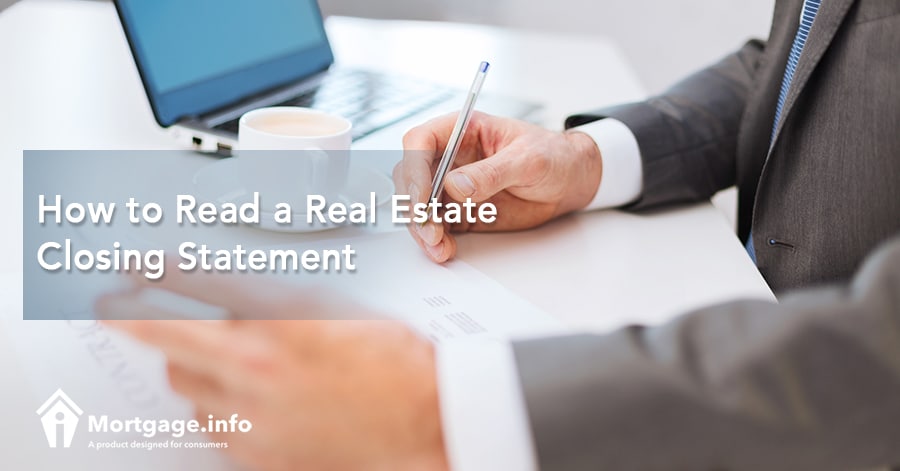The real estate closing statement was called the HUD-1 Settlement Statement until a few years ago. Today, it’s known as the Closing Disclosure. It’s one of the important documents you will sign at the closing. Understanding what to look for and what everything means will help you understand its importance.
Compare Offers from Several Mortgage Lenders.
The First Page of the Closing Statement
The first page of your closing statement may look slightly familiar. It should match the Loan Estimate you received three days after you applied for the loan. It should contain information pertaining to your loan including the loan amount, loan term, and interest rate. It should also tell you of any odd terms about the loan, such as if there is a balloon payment or prepayment penalty, both of which are rare today. Finally, you should see the total monthly payment with both principal and interest included.
As you move down the page, you’ll see a Projected Payments section. This breaks down the payments into several categories. If you have an adjustable rate loan or you pay mortgage insurance, these amounts may vary slightly through the years. This helps you have full disclosure moving forward regarding your loan payments.
Finally, this page discloses the total amount of closing costs paid for the loan and the amount of cash you must bring to the closing.
The Second Page of the Closing Statement
The second page of the closing statement is where you’ll see the breakdown of the closing costs. If you have closed on a loan prior to 2015, this will look similar to the HUD-1 Settlement Statement. You’ll see a breakdown of the following categories:
- Origination charges – This includes any fees paid to the lender such as origination points, discount points, underwriting and processing fees
- Services borrower did not shop for – This includes all 3rd party fees that you could not shop for because the lender predetermines these for you. They may include appraisal, credit report, flood certification, and tax service fees.
- Services borrower did shop for – This includes 3rd party fees you could have shopped if you chose to do so. They may include pest inspection, title service, and survey fees.
Click to See the Latest Mortgage Rates.
On the bottom half of the page you’ll see a breakdown of ‘Other Costs,’ These are usually government-related fees, such as transfer tax and recording fees as well as your prepaid fees. Look for the following:
- Homeowner’s insurance premiums (usually a full 12 months’ worth)
- Mortgage insurance
- Prepaid interest – If you close before the end of the month you’ll have to pay the interest up to that point since mortgage is paid in arrears
- Property taxes
- HOA fees
- Title insurance
At the bottom of the page, you’ll see the total closing costs.
The Third Page of the Closing Disclosure
On the third page, you’ll likely see the information you are after – the cash you need to close the loan. However, it does show you a comparison between what you saw on the Loan Estimate and the final closing costs at the closing.
You’ll see total closing costs minus any costs you prepaid. Make sure the amounts match your records. You’ll also see the down payment amount; again make sure the amount is correct. If you put down an escrow deposit, that amount should be subtracted from the amount of the down payment. Finally, you’ll see any seller or lender credits subtracted from the amount as well.
The bottom line tells you the total cash to close you need to finish the process.
As you move further down the disclosure, you’ll see various information that further calculates the totals above. As long as you know the above totals are correct, you can skim through these sections just to make sure you understand them, but they are all reflected in the first few pages.
On the fourth page, however, you’ll want to read about any special features of your loan. For example, is the loan assumable? If so, the appropriate box will be checked. You’ll also learn if your lender accepts partial payments or if it has an escrow account.
It’s important for you to go over the closing statement with your lawyer, real estate agent, or lender. This way you can make sure you understand it in its entirety. Not understanding the statement could result in you taking a loan that you don’t fully understand. The Closing Disclosure is much less overwhelming than the previous HUD-1, making it easier for borrowers to have a full understanding of the loan they are about to undertake.

